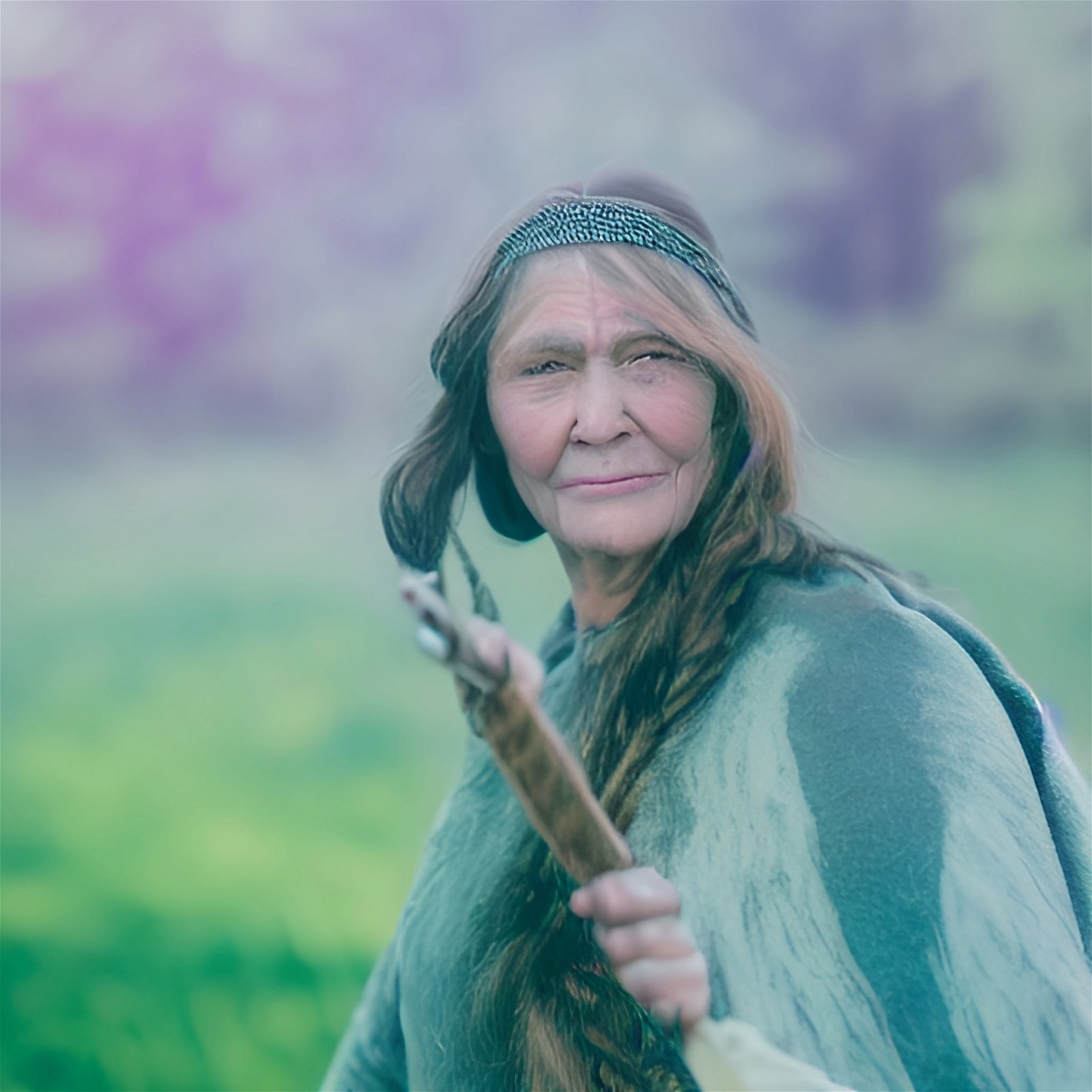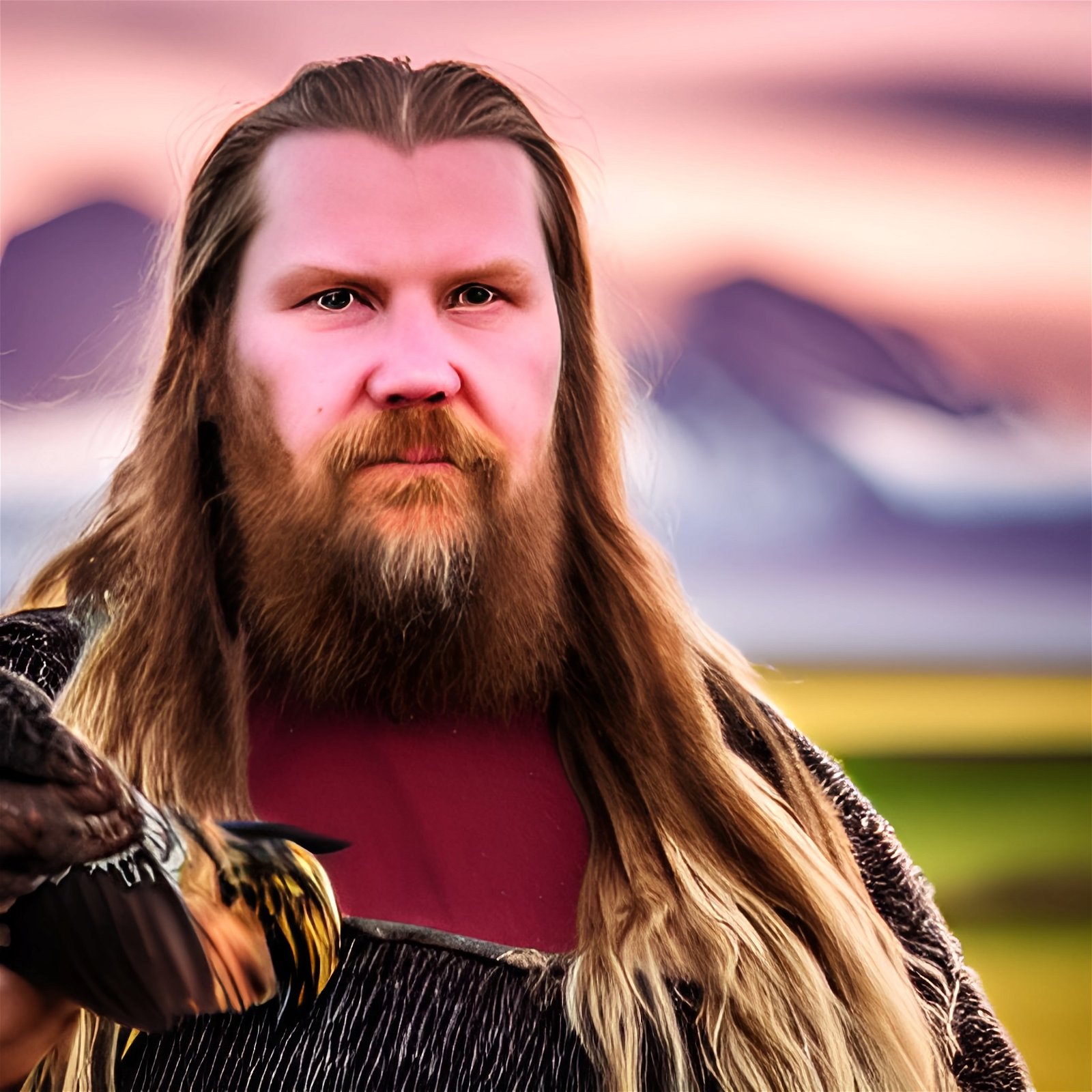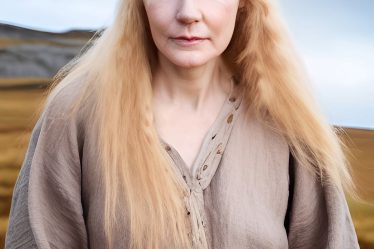
Walks from house to house and tells news and stories in exchange for food and shelter. Conversely, she accepts provisions in exchange for not telling certain news at the next house, but she never accepts a bribe to lie.
Her nickname comes from the seal-skin cloak she wears. The fur has worn off in some places, but she keeps it well greased and it serves as a wind- and snowproof cape, making her unafraid to go out in any weather. She has had the cloak, which is the only valuable thing she has, for a very long time, and it is rumoured that she once traded her child for it, but that’s probably just to scare the kids.
Doesn’t talk a lot about herself, so nobody knows exactly who her parents are, and plenty of hearsay exists about her background. She is rumoured to be half-troll or a princess who was naughty and was turned into this old vagrant woman, or that she jumped on an ice floe as a girl and floated all the way to Bjartey on it and had nearly starved to death had she not learned to catch fish with her bare hands and eaten it raw. When the children ask her about it (if they dare) she only smiles.
Likes:
- hot soup with chunks of meat in it, cream cheese, fresh milk, fresh berries
- food that she can take with her and eat on the way: stockfish, dried roots and berries, bread, smoked meat (but she rarely gets that)
- frozen-over lakes and rivers, because she can use them for shortcuts
- the warmth of a dog or a cat on her lap, sitting next to a fireplace
Dislikes:
- sea gulls, Arctic terns, ravens and other aggressive birds that harrass her on her way
- bogs, swamps and fens: She has a recurring dream that she will drown in one
- men making advances on her when they’re drunk
Questions and Answers
Why diffentiate the seal’s gender in her nickname?
Mostly because it sounds better in Old Norse. Old Norse has three grammatical genders: feminine, masculine, and neuter. selr (masc.) is the seal in general, urta, kæpa and kolla (fem.) are female seals, brimill (masc.) is the male seal.
The gender of the nickname doesn’t have to be in sync with the given name: Þorkell krafla, Úlfr kráka, Björn buna and Ketill gufa are examples of male names with feminine nicknames. But if the gender fits, the first choice would be to use it that way, and Þorbjörg urta is the most obvious candidate.
If you have trouble figuring out why you should need so many words for seals, remember that English does the same thing for other animals and differentiates between mares, stallions, foals, fillies, colts, yearlings, entires and geldings, which in the end are all horses.
What is the headband she’s wearing made of?
Fish leather.
How far does she have to walk from one farm to another?
I haven’t found any precise rules about how much land a settler could “take”, although there is this notion of a man having to walk around the land he wanted to claim, carrying fire, in one day. I’m still looking for sources. If it was a rule at all, then it didn’t apply to the first settlers, who claimed enormous parts of the island and gave whole valleys to family, followers or freed slaves. Have a look at 👉 SagaMap, where the farms that are mentioned in the sagas of the Icelanders are listed to get a representation of the distances Þorbjörg would have to walk (and don’t forget that many other vagrant people of the time walked them, too, and not all reached the next farm in time.)


